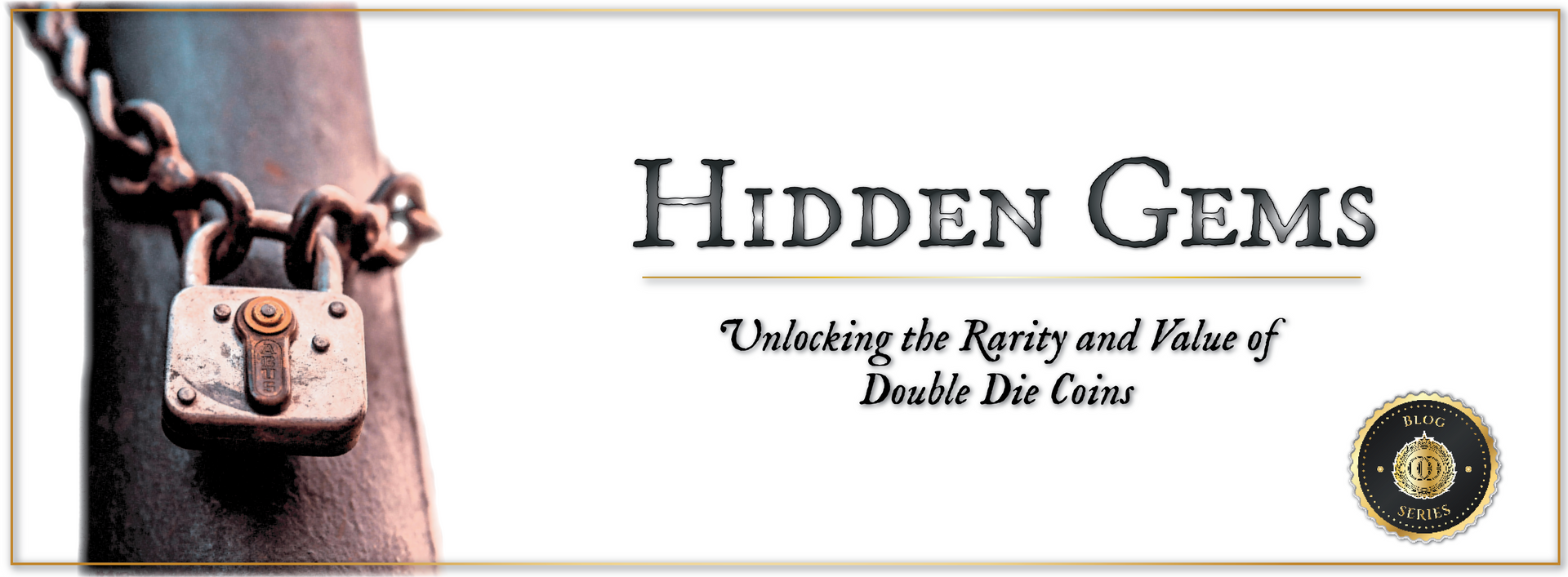Ready to start your search? Grab your Error Coin checklist here!

In the world of coin collecting, few terms spark as much excitement as "double die." These rare coins, born out of a minting mistake, hold a special place in the hearts of collectors. Whether you're a seasoned numismatist or just discovering the joy of coin collecting, understanding the rarity and value of double die coins can open doors to hidden treasures in your collection.
What Is a Double Die Coin?
A double die coin is produced when a coin’s design is accidentally impressed onto the die more than once, causing a noticeable doubling effect on certain features, such as the date, letters, or other key design elements. This doubling is often most visible on dates or lettering, making it a distinctive and highly sought-after error by collectors.
These minting errors were once much more common in older coins, particularly before minting technology became more precise. As a result, many double die coins found in circulation today come from decades ago, adding a layer of history to their value.
The Rarity of Double Die Coins
Rarity is a major driver of value in the world of coins, and double die coins are no exception. While errors do occur in modern minting, the more notable and valuable double die coins tend to be from earlier eras, especially before the 1990s.
For instance, the 1971-S Doubled Die Obverse Penny is a remarkable example of such rarity. Recently, a version of this coin sold for $10,350 at auction due to its well-preserved condition and the prominence of the doubling effect[1†source]. Another iconic example is the 1955 Lincoln Cent Double Die, one of the most famous error coins in U.S. history, known for its striking double impression on the date and lettering. The rarity of these coins, especially in higher grades, keeps their value high over the decades.
Why Double Die Coins Hold Value
The value of a double die coin is determined by several factors: rarity, demand, and the visibility of the error. The more pronounced the doubling, the more attractive it becomes to collectors. Combine that with the rarity of the coin—especially those from earlier years—and you have a coin that commands a premium price.
For those who appreciate history and craftsmanship, double die coins offer more than just financial value. They represent a moment in time when the U.S. Mint, despite its best efforts, let an error slip through that has since become a treasure to the collector's community. This deepens their appeal, especially to collectors with a passion for American history.
A recent example from modern times is the 1992 Close AM Penny, which could fetch up to $25,000 depending on its condition. A similar, more common 1969-S Doubled Die Penny is also highly prized among collectors, with recent reports showing it could be worth up to $126,500 depending on its grade and rarity[2†source].
How to Spot a Double Die Coin
Spotting a double die coin can sometimes be challenging, but with a little practice and attention to detail, it’s possible. The most obvious signs are doubling in the date, mintmark, or prominent lettering. Using a magnifying glass can help reveal these details, especially in coins that are heavily circulated and may have worn down over time.
Key areas to inspect on a coin include:
- The Date: Doubling is often noticeable here, particularly in famous double die coins like the 1955 Lincoln Cent.
- The Letters: Look closely at "Liberty" or "In God We Trust" for doubled features.
- The Mintmark: While rare, some double die coins display doubling in the mintmark, adding to their value.
Collecting Double Die Coins
For veteran collectors or those new to the hobby, double die coins offer a unique blend of rarity, history, and potential value. They capture a fascinating moment in minting history where technology didn’t quite meet expectations, and those small mistakes became valuable gems for collectors.
Investing in double die coins isn’t just about potential financial returns; it’s about owning a piece of American history. These coins represent the imperfections that make our history richer and more nuanced—something that resonates deeply with many collectors, especially those with a patriotic appreciation for our country’s past.


